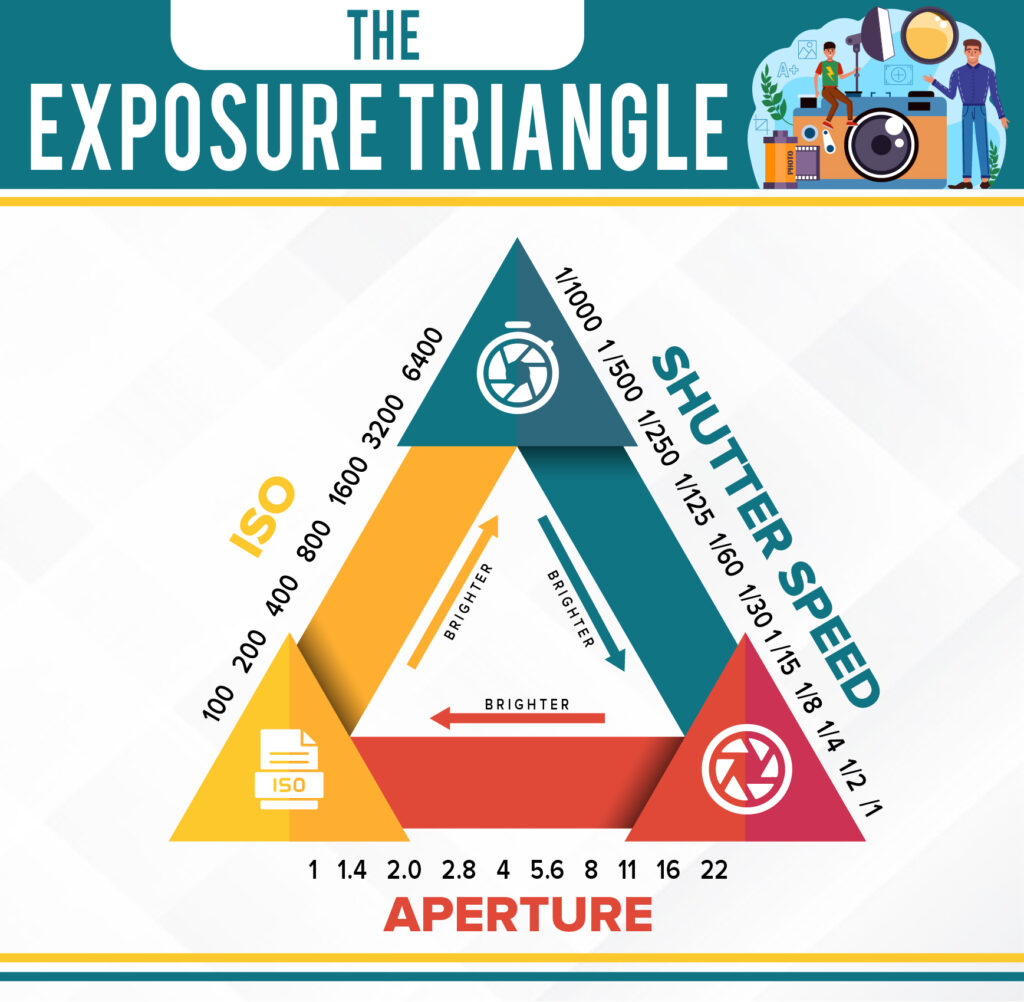
As a beginner in photography, understanding the exposure triangle is essential for taking great pictures. The exposure triangle consists of three elements: aperture, shutter speed, and ISO. Let me explain each of them in simple terms:
Simple Explanation: When you have a bigger aperture (smaller f-stop number like f/2.8), more light enters your camera, and your background becomes blurry. When you have a smaller aperture (larger f-stop number like f/11), less light comes in, and your background becomes clearer.
Simple Explanation: A fast shutter speed (like 1/1000 sec) freezes fast-moving objects, while a slow shutter speed (like 1/30 sec) creates a sense of motion in the photo.
Simple Explanation: In bright daylight, you can use a low ISO, but in low-light situations, you might need to increase the ISO to capture enough light. However, higher ISO settings can also introduce some graininess or noise in the photo.

Now, how do these three elements work together? Well, the exposure triangle is all about balance. When you change one setting, you'll need to adjust the others to maintain a well-exposed photo.
As you practice and experiment with the exposure triangle, you'll get a better understanding of how these settings interact to create various effects in your photographs. Happy shooting!